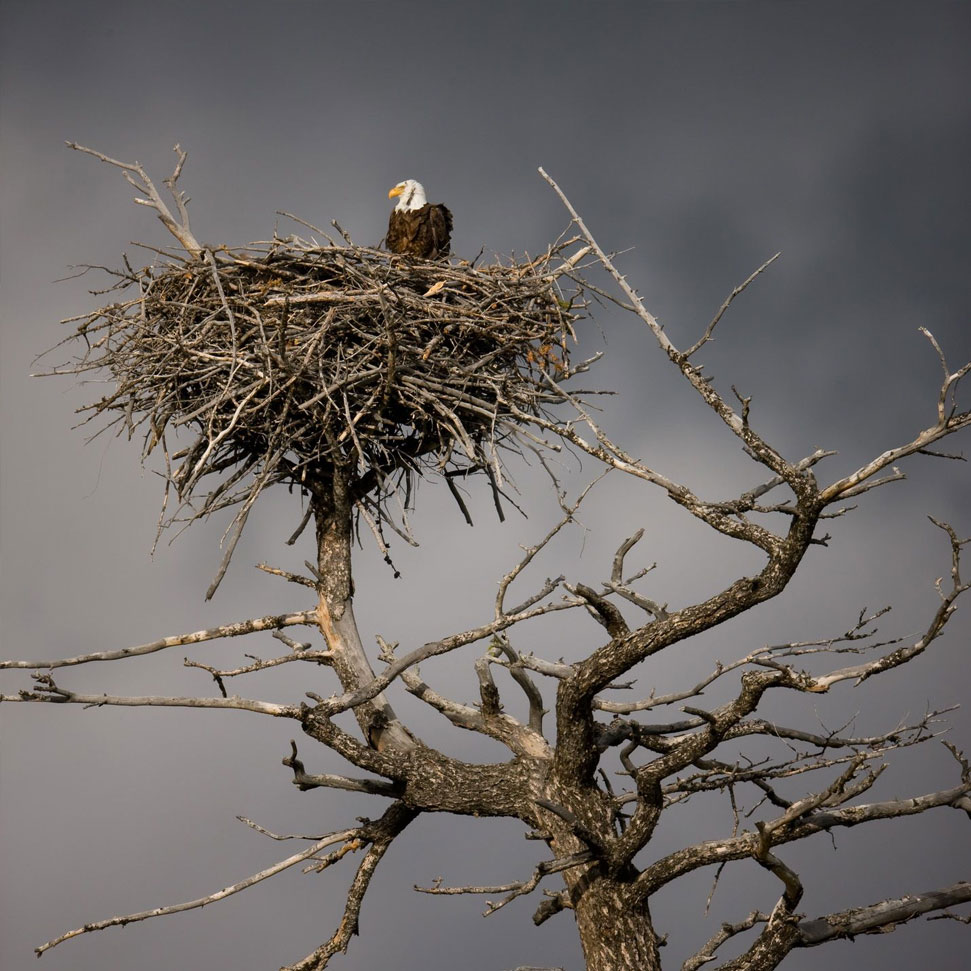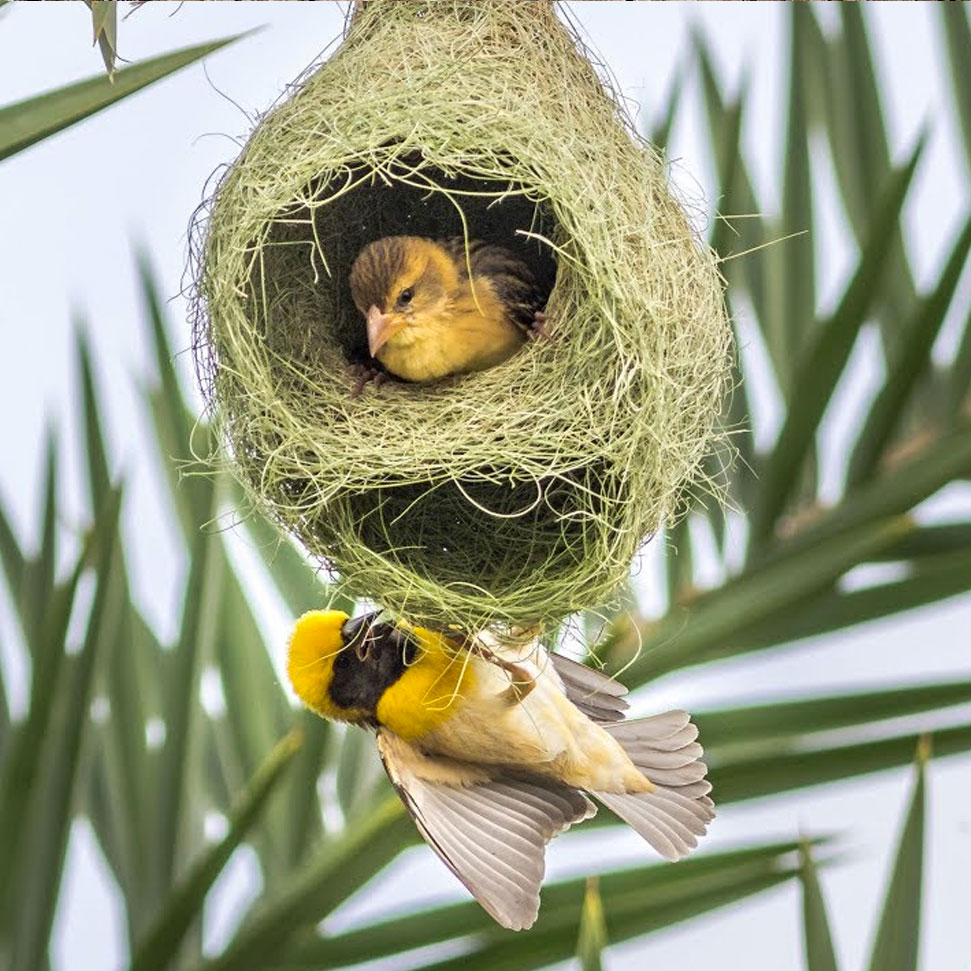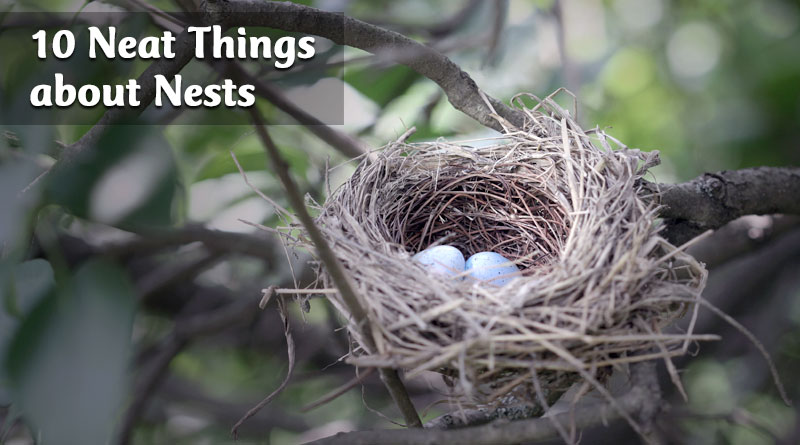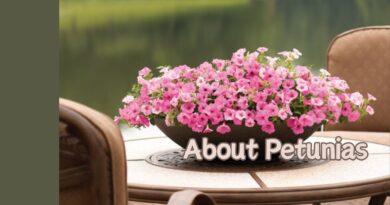About Nests

1. What are they?
Nests are structures built to hold eggs, offspring and, sometimes, adults. They’re often built owing to the “nesting instinct” of pregnant females, caused by the hormone estradiol. Some species use them only for a very short time and only once; others will use them indefinitely.

2. Tiny.
Hummingbird nests are teeny tiny. The bee hummingbird’s is the smallest at under an inch across. Into these nests, the female typically lays two eggs, each the size of a coffee bean. Cute!

3. Big.
Eagle’s nests are called eyries. Eagles mate for life and typically return to the same eyrie year after year. The eyrie will start out a normal size, but each year the eagles add to it, making it bigger. The biggest one ever found in North America, a bald eagle’s nest, was almost 10 feet wide and 20 feet deep.

4. Bigger.
Sociable weavers build an apartment-type nest, each one housing up to 200 pairs. They’re built out of grasses and look like big haystacks in trees or on a telephone post. There are multiple entrances to the different chambers from below, each about three inches wide. The entire apartment will be up to 20 feet wide and way up to a ton. Multiple generations of the bird live in one complex. You’ll have to go to southern Africa to see them.

5. Simple.
The simplest kind is called a scrape. It’s a depression in the ground, sometimes with feathers, stones or bits of vegetation in it. They’re built by shorebirds, some falcons, quails, pheasants and ostriches. Some species will simply lie down where the nest is to be built and rock back and forth to make the depression. Others will actively dig a scrape.

6. Complex.
Or rather, they look complex. The nests of certain weaver birds can be quite intricate and beautiful, such as the southern masked weaver of Africa. The male of this species typically builds about 25 nests per season to please each of his baby-mammas. The females will line it with grasses and feathers.

7. Spit.
The edible-nest swiftlet builds its nests inside a cave or on a cliff, shaped like a bracket and made of layers of its own hardened saliva. If you’ve heard of bird’s-nest soup, this is the bird’s nest that is in it. Apparently, it doesn’t taste like anything but is purported to be an aphrodisiac.

8. Spider webs.
Spider webs are used in nest building by several birds, including hummingbirds, some flycatchers and warblers. The long-tailed tit uses just four materials to build its nest: lichen, moss, spider silk and feathers. It is lined with feathers; moss and spider silk knit together to form the structure; and it is camouflaged on the outside with lichen.

9. Cigarette butts.
You use what you can find, right? House sparrows and house finches in Mexico City often incorporate the fibre from cigarette butts into their nests. Scientists believe this may have to do with killing parasites, because nicotine is a parasiticide.

10. No nest.
Some birds don’t build any nest. The tropical white tern will lay her eggs in the fork of a tree. The chuck-will’s-widow of the Eastern US lays her eggs on the ground, where the mottled colouration blends in. Antarctica’s emperor penguin female lays a single egg on the ice then immediately rolls it onto her husband’s feet; he tucks it into a roll of fat to protect it from the cold.
– Shauna Dobbie Copyright©
Pegasus Publications Inc.




